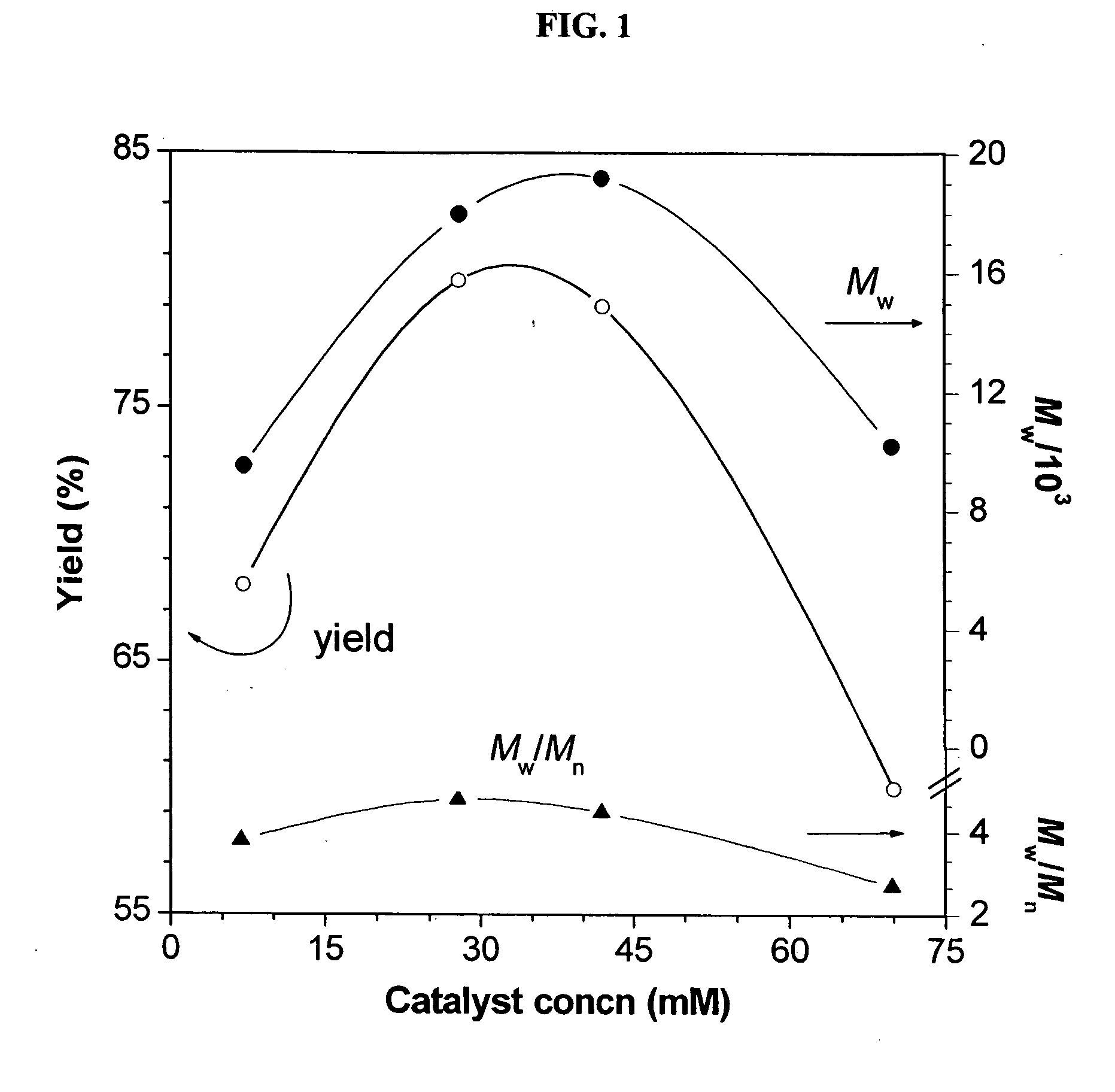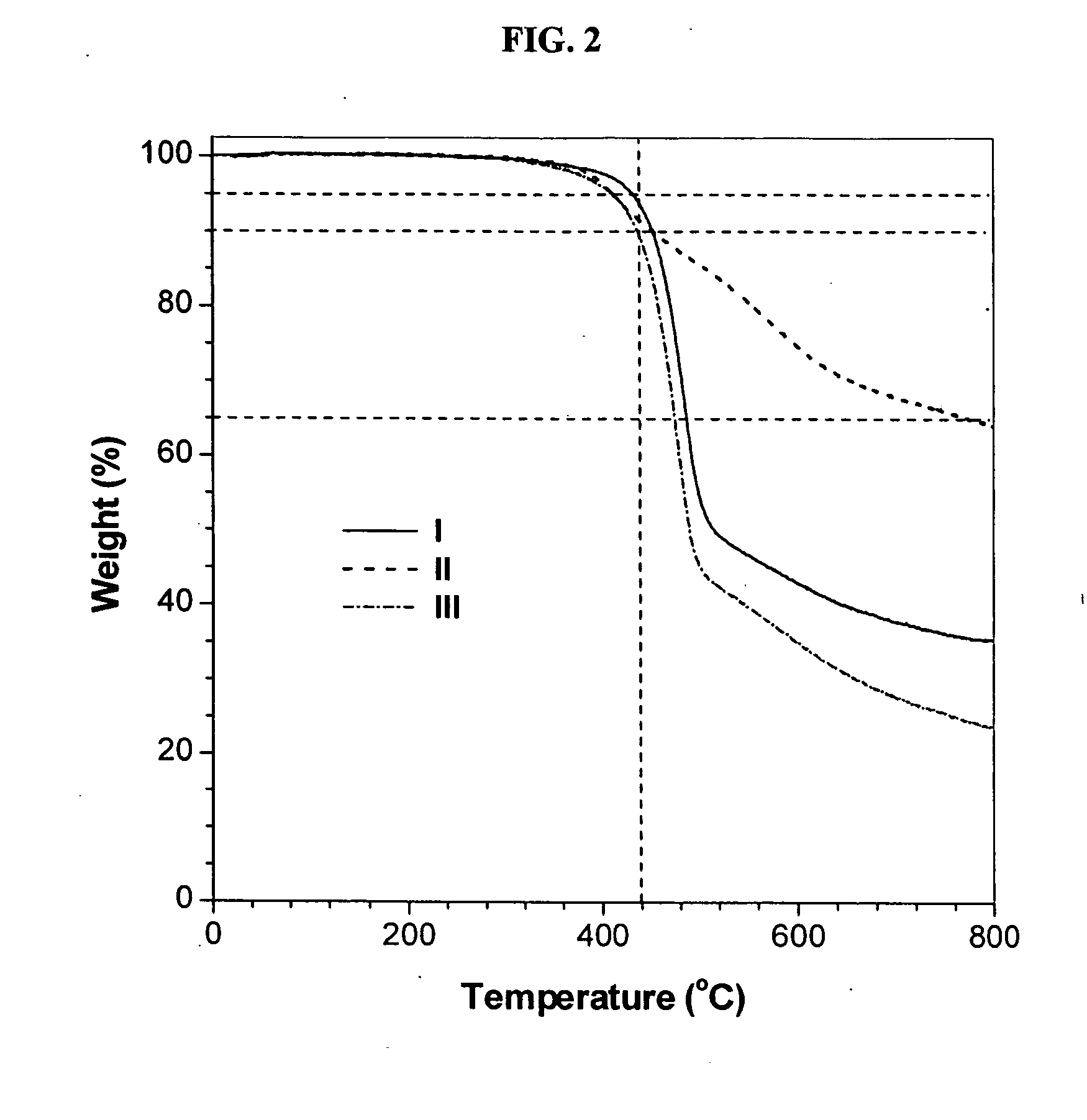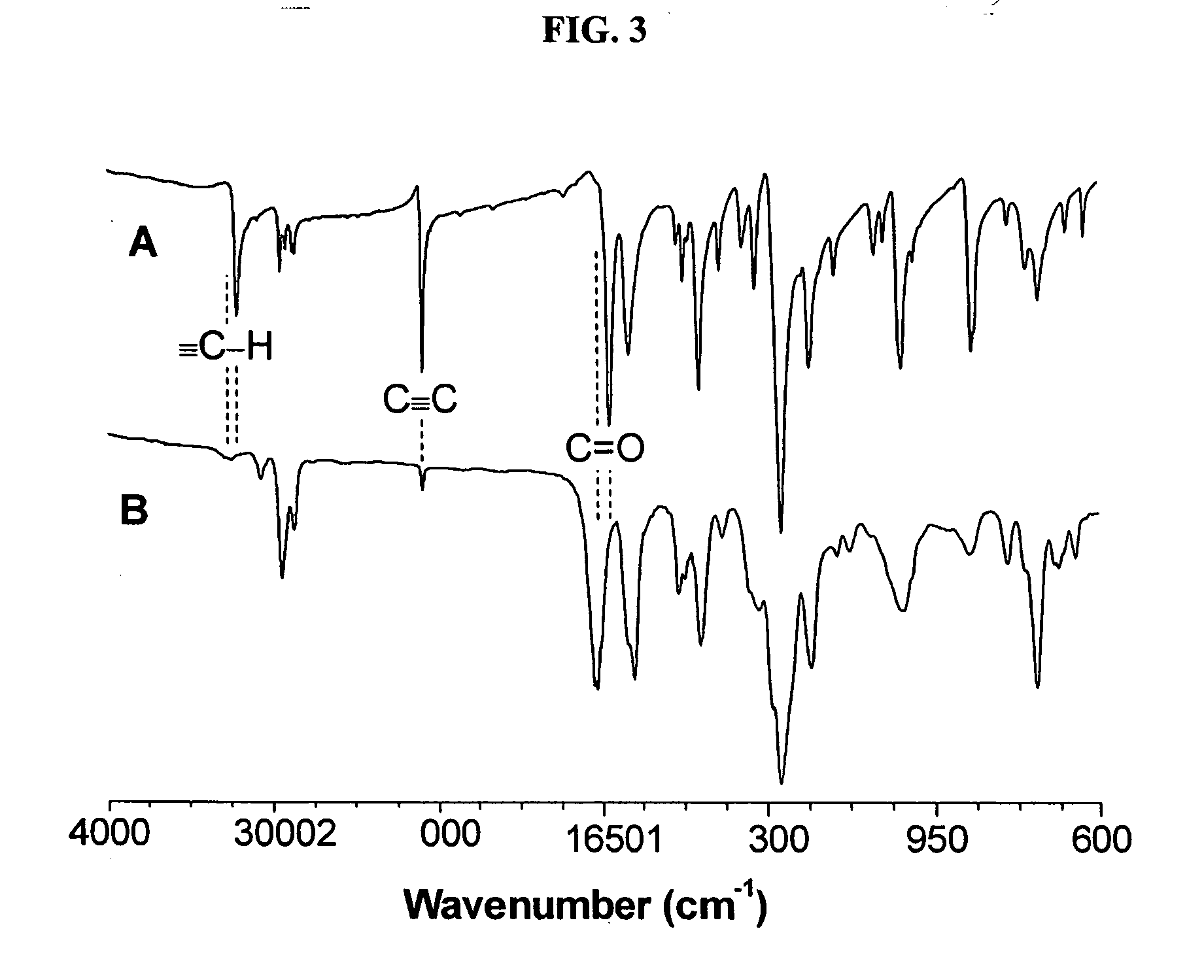Soluble branched triaroylbenzene-based polymer and its synthetic method
- Summary
- Abstract
- Description
- Claims
- Application Information
AI Technical Summary
Benefits of technology
Problems solved by technology
Method used
Image
Examples
example 1
Hyperbranched poly[3,3′-(1,6-hexylenedioxy) bis(benzoylacetylene)] (I)
[0046]
[0047] In a 15 mL Schlenk tube with a three-way stopcock on the sidearm was placed 100 mg of 3,3′-(1,6-hexylenedioxy) bis(benzoylacetylene) (0.267 mmol) under nitrogen in a glovebox. Distilled dioxane (1.9 mL) was injected into the tube using a hypodermic syringe, followed by the addition of a solution of piperidine (0.267 mM) in dioxane (0.30 mL). The mixture was stirred under reflux for 24 h. Afterwards, the polymerization mixture was added dropwise to ˜300 mL methanol through a cotton filter under stirring. The precipitate of the polymer was allowed to stand overnight and was then collected by filtration. The isolated polymer was washed with methanol and dried under vacuum at room temperature to a constant weight.
[0048] Characterization data: Brown power, yield: 79%. Mw: 19200, Mx / Mn: 4.5 (GPC, polystyrene calibration). IR (thin film), ν (cm−1): 3243 (≡C—H stretching), 3067 (Ar—H stretching), 2940, 2867...
example 2
Hyperbranched poly[4,4′-(1,6-hexylenedioxy) bis(benzoylacetylene)] (II)
[0049]
[0050] Homopolymerization of 4,4′-(1,6-hexylenedioxy) bis(benzoylacetylene) was carried out in accordance with the same procedure as described in Example 1 with 100 mg (0.267 mmol) 4,4′-(1,6-hexylenedioxy) bis(benzoylacetylene) instead of 3,3′-(1,6-hexylenedioxy) bis(benzoylacetylene).
[0051] Characterization data: Yellow power, yield: 65%. Mw: 9100, Mw / Mn: 4.0 (GPC, polystyrene calibration). IR (thin film), ν (cm−1): 3066 (Ar—H stretching), 2941, 2867 (CH2 stretching), 1661 (C═O stretching), 1600, 1574 (C═C ring stretching). 1H NMR (300 MHz, CD2Cl2), δ (ppm): 8.47, 8.31, 8.22, 7.80, 6.94, 4.00, 1.80, 1.51. 13C NMR (75 MHz, CDCl3), δ (ppm): 193.97, 163.70, 162.65, 139.07, 137.75, 133.66, 132.88, 132.39, 129.45, 114.87, 68.66, 67.89, 29.37, 27.99, 26.09, 24.88.
example 3
Hyperbranched poly[3,3′-(1,4-phenylenedimethoxy) bis(benzoylacetylene)] (III)
[0052]
[0053] Homopolymerization of 3,3′-(1,4-phenylenedimethoxy) bis(benzoylacetylene) was carried out in accordance with the same procedure as described in Example 1 with 100 mg (0.254 mmol) instead of 3,3′-(1,4-phenylenedimethoxy) bis(benzoylacetylene) instead of 3,3′-(1,6-hexylenedioxy) bis(benzoylacetylene).
[0054] Characterization data: Yellow power, yield: 85%. Mw: 15000, Mw / Mn: 4.0 (GPC, polystyrene calibration). IR (thin film), ν(cm−1): 3064 (Ar—H stretching), 2927, 2872 (CH2 stretching), 1667 (C═O stretching), 1581, 1485 (C═C ring stretching). 1H NMR (300 MHz, CD2Cl2), δ (ppm): 8.32, 8.27, 7.34, 7.17, 5.04. 13C NMR (75 MHz, CDCl3), δ (ppm): 194.65, 159.23, 158.26, 138.90, 138.20, 137.17, 134.34, 132.65, 130.09, 128.06, 123.32, 122.05, 120.35, 117.99, 115.82, 71.51, 70.16.
PUM
| Property | Measurement | Unit |
|---|---|---|
| Time | aaaaa | aaaaa |
| Time | aaaaa | aaaaa |
| Fraction | aaaaa | aaaaa |
Abstract
Description
Claims
Application Information
 Login to View More
Login to View More - R&D
- Intellectual Property
- Life Sciences
- Materials
- Tech Scout
- Unparalleled Data Quality
- Higher Quality Content
- 60% Fewer Hallucinations
Browse by: Latest US Patents, China's latest patents, Technical Efficacy Thesaurus, Application Domain, Technology Topic, Popular Technical Reports.
© 2025 PatSnap. All rights reserved.Legal|Privacy policy|Modern Slavery Act Transparency Statement|Sitemap|About US| Contact US: help@patsnap.com



